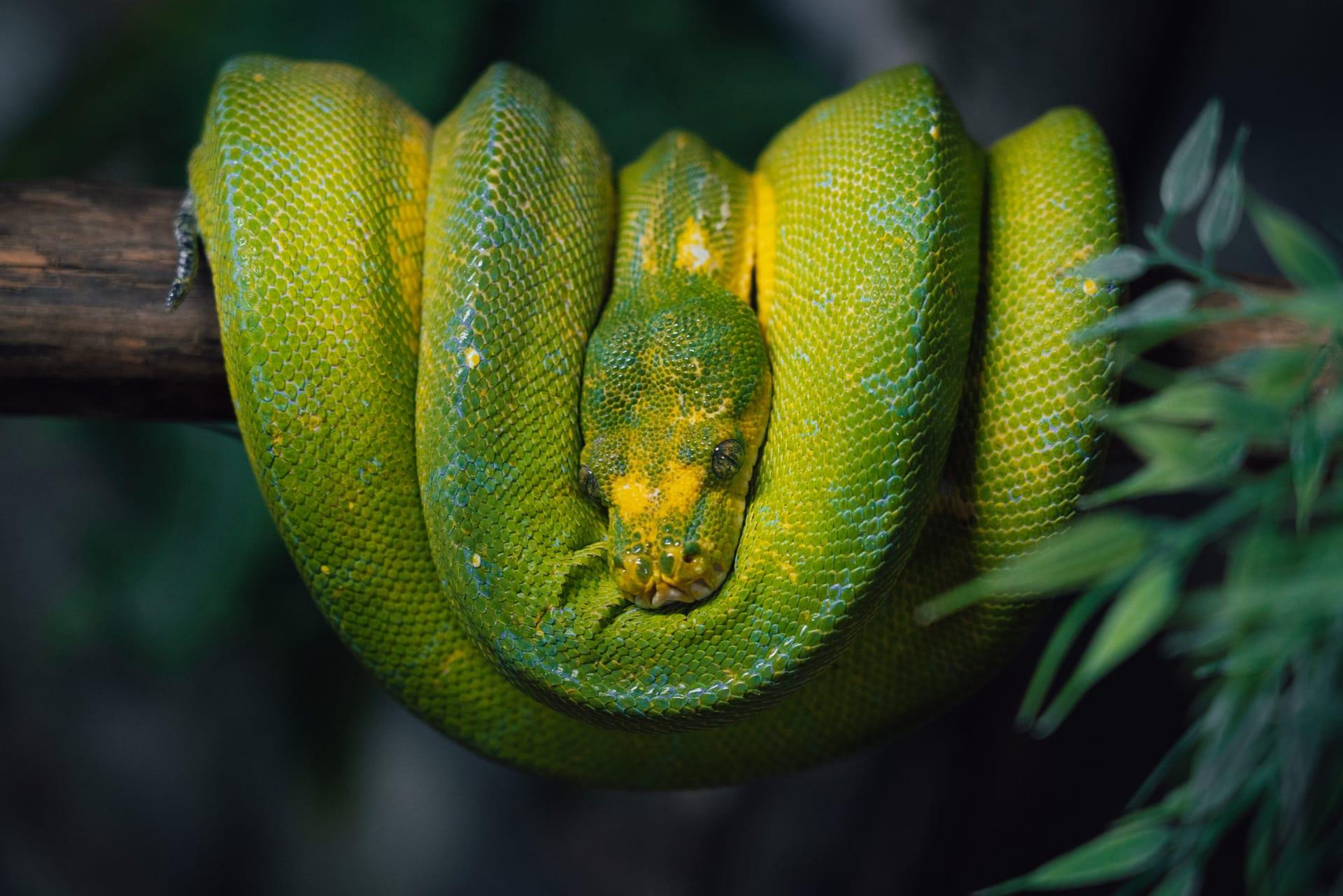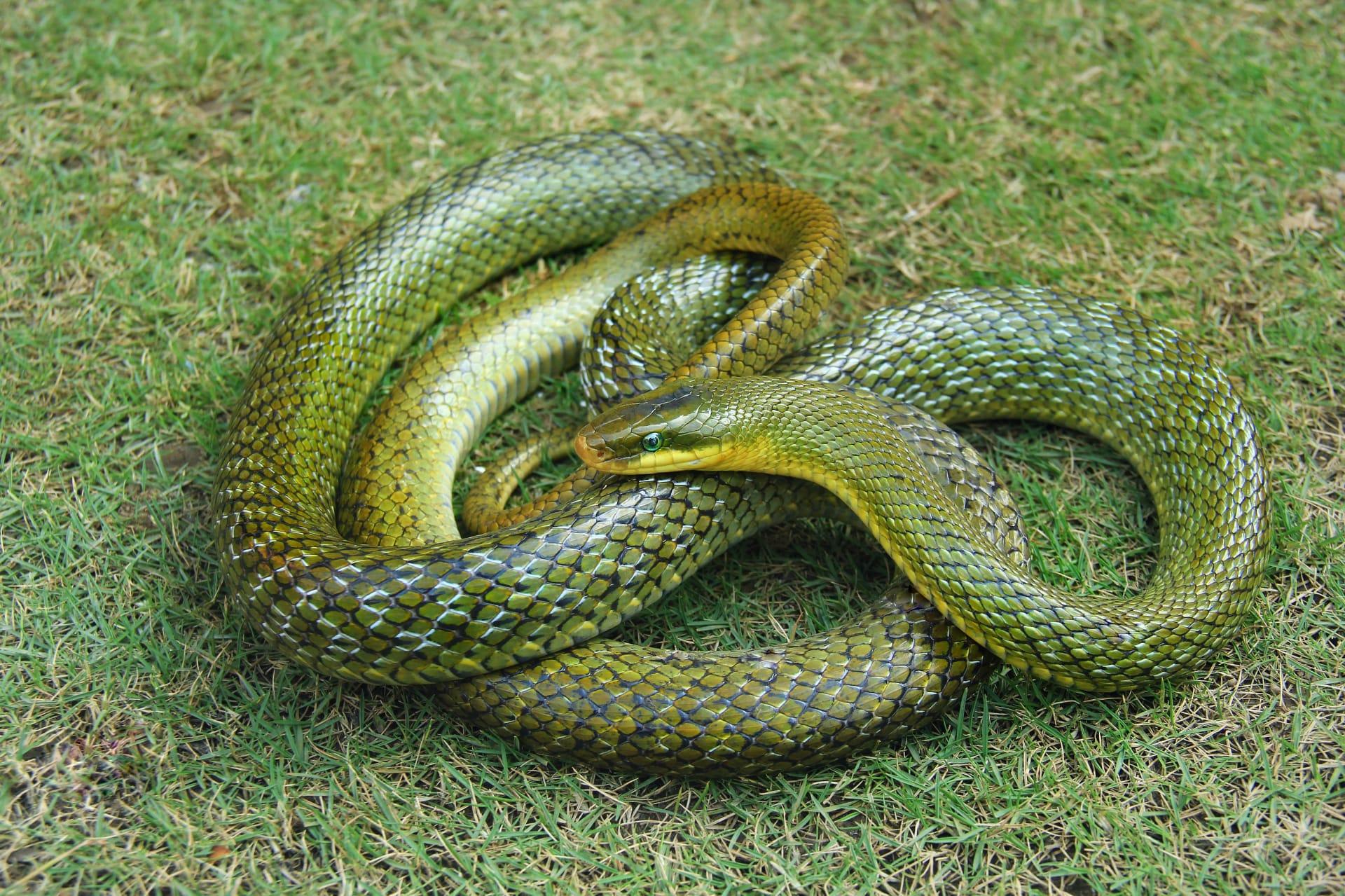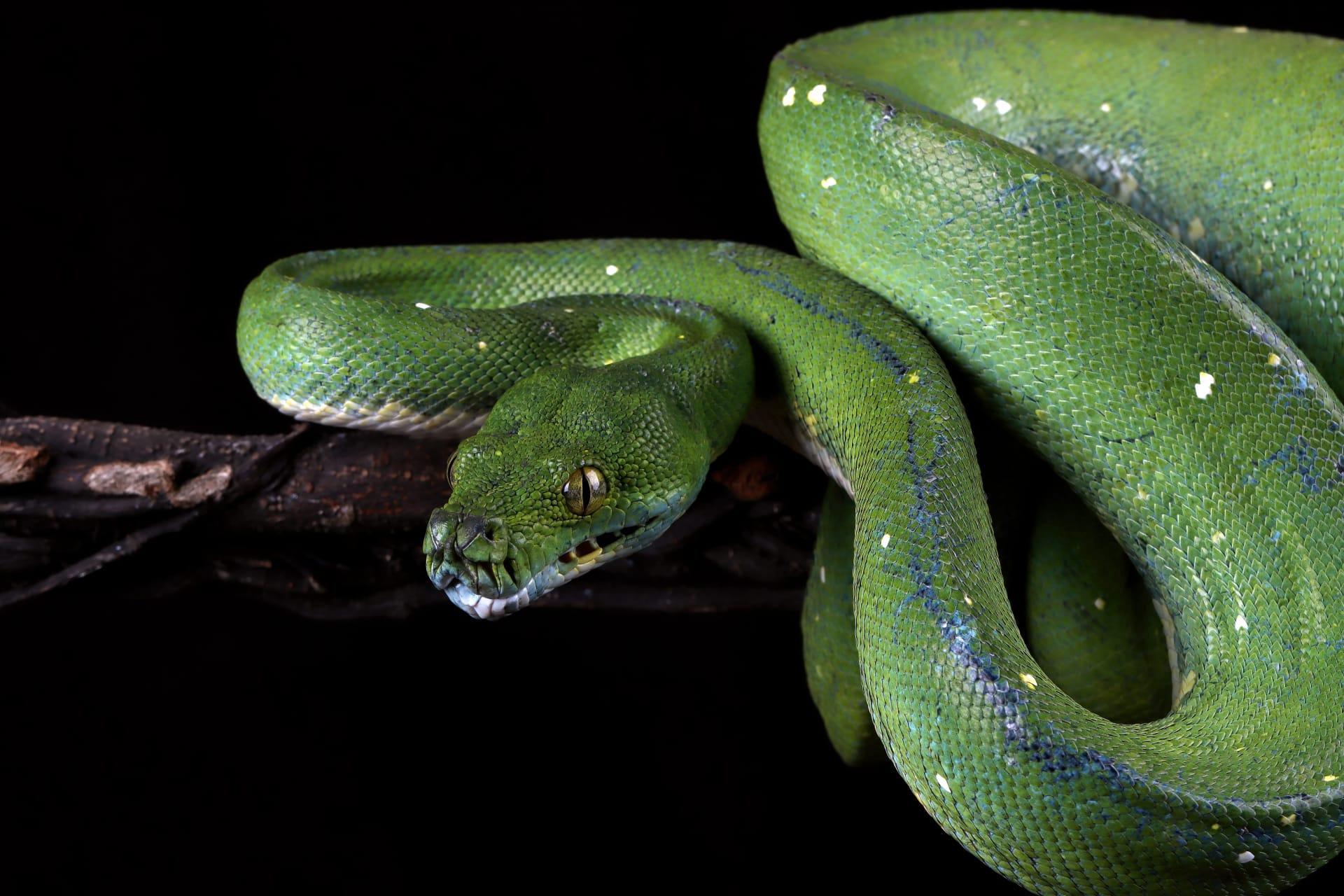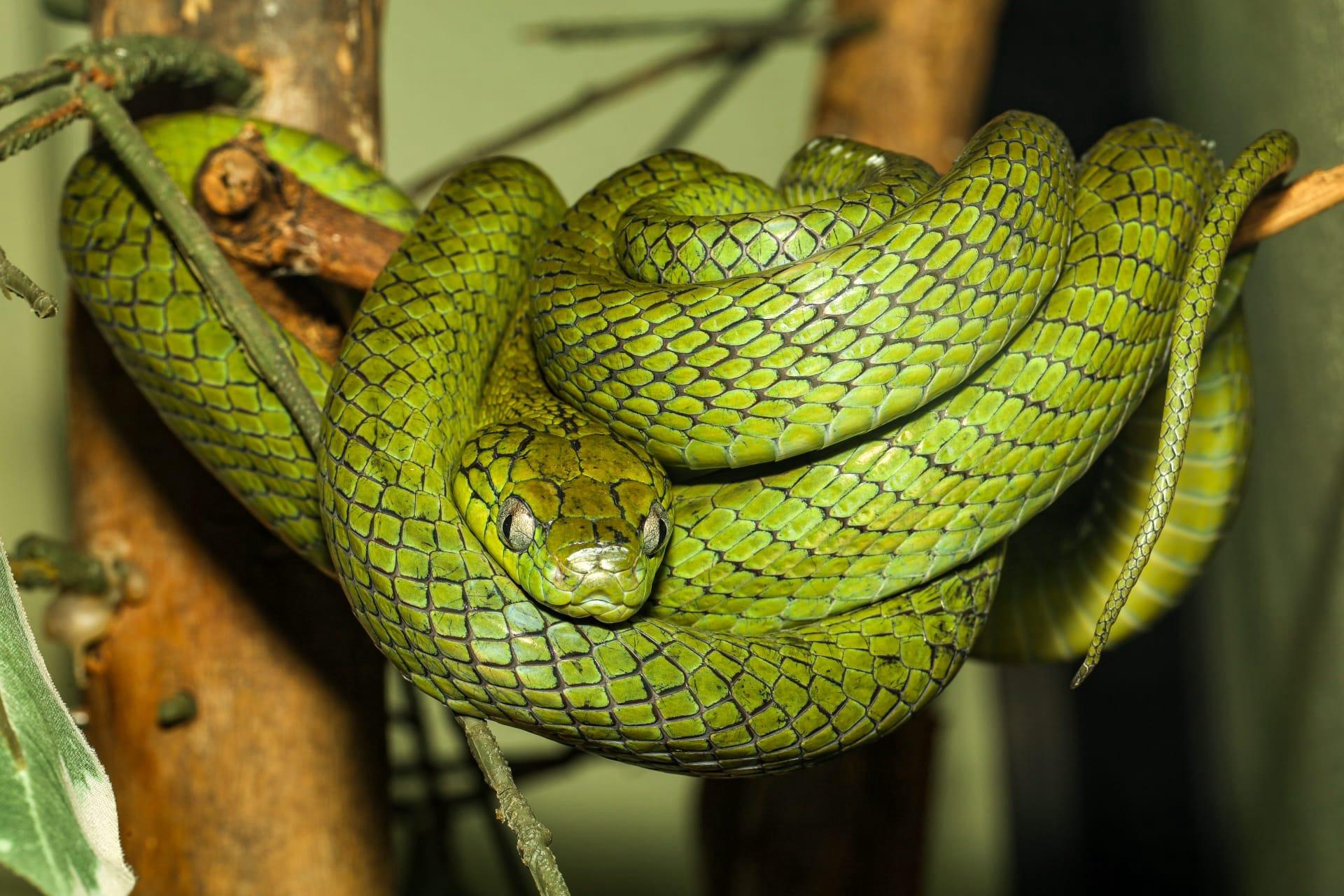Green Tree Python
- Home /
- Mini Encyclopedia /
- Animal /
- Green Tree Python
1
The Green Tree Python, scientifically named Morelia viridis, belongs to the family Pythonidae. This species, first described in 1842, stands out with its bright green coloration in adulthood, although juveniles display varied hues like yellow, orange, or blue. The species shows sexual dimorphism, with females generally larger than males. Mature Green Tree Pythons reach an average length of 5 to 6 feet, though some specimens can exceed 7 feet.
Native to the rainforests of Southeast Asia and Australia, the Green Tree Python's habitat spans across Indonesia, Papua New Guinea, and the Cape York Peninsula in Australia. These snakes favor humid and warm environments, typically residing in trees. Their distribution is influenced by the availability of dense canopy cover and suitable perching branches, essential for their arboreal lifestyle.

2
Question: A common misconception about the Green Tree Python is its aggressiveness. People often believe these snakes are highly aggressive due to their defensive posturing when threatened.
Answer: In reality, Green Tree Pythons are generally not aggressive but rather defensive. They adopt a striking pose to deter predators or perceived threats, but this behavior is primarily a defensive mechanism rather than an indication of inherent aggression. When raised in captivity and handled gently from a young age, they can become quite docile. It's crucial to understand their behavior in the context of their natural survival instincts.

3
The Green Tree Python employs unique survival strategies to thrive in its environment. One key tactic is its ability to camouflage. The vivid green of the adults perfectly blends with the foliage, making them nearly invisible to both prey and predators. Additionally, their slender, branch-like body aids in this deception.
Another strategy is their ambush hunting technique. These snakes are patient predators, often waiting motionlessly for hours or even days for unsuspecting prey to come within range. They primarily feed on small mammals and birds, striking swiftly and then coiling around their catch to subdue it before consumption.

4
In the ecosystem, the Green Tree Python plays a significant role in controlling the population of their prey, which includes small mammals and birds. By preying on these animals, they help maintain a balanced ecosystem. This predatory role ensures that the populations of these smaller creatures do not become too large, which could lead to overgrazing or other ecological imbalances.
The Green Tree Python also serves as a prey species for larger predators, including birds of prey and larger mammals. This predator-prey dynamic is crucial for a healthy ecosystem, contributing to the natural control of species populations and the flow of energy through the food web.

5
Film: "The Beauty of Snakes," a documentary produced in the United States in 2005, offers a stunning visual exploration of various snake species, including the Green Tree Python. It delves into their unique behaviors and habitats, showcasing the species' striking coloration and arboreal lifestyle.
Book: "The More Complete Chondro," authored by Greg Maxwell and published in the United States in 2005, provides an in-depth look into the care, breeding, and natural history of the Green Tree Python. Maxwell's expertise offers readers a comprehensive guide, enriched with practical insights.
Book: "Pythons of the World: Australia," by David G. Barker and Tracy M. Barker, published in the United States in 1994, includes a detailed section on the Green Tree Python. This book provides a broader context of Australian pythons, with a focus on the species' natural history, behavior, and habitat.